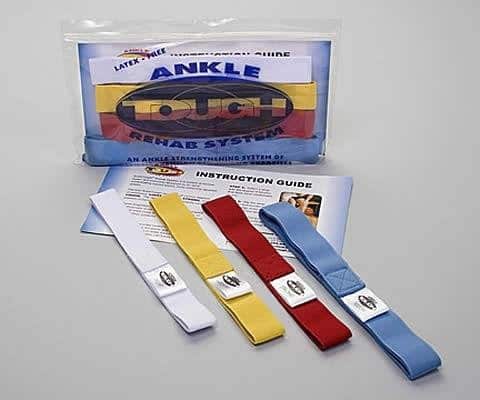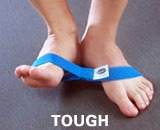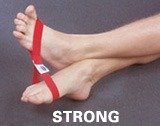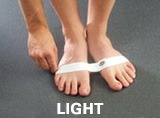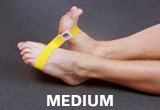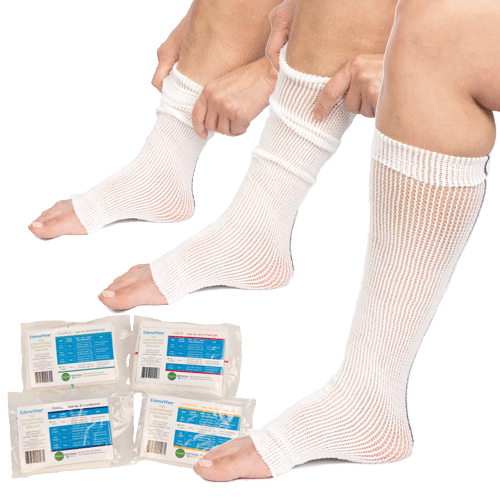Description
AnkleTough® Rehab System is a system of tension straps and exercises designed as an aid to rehabilitate and strengthen injured ankles; most commonly sprained ankles.
The four AnkleTough® straps are of various degrees of resistance: LIGHT, MEDIUM, STRONG, and TOUGH.
These progressive resistive straps were designed by physicians to rehabilitate and strengthen the injured ankle, and/or to aid in the prevention of an ankle injury. By increasing muscle power, the risk of future ankle injuries can be significantly reduced.





